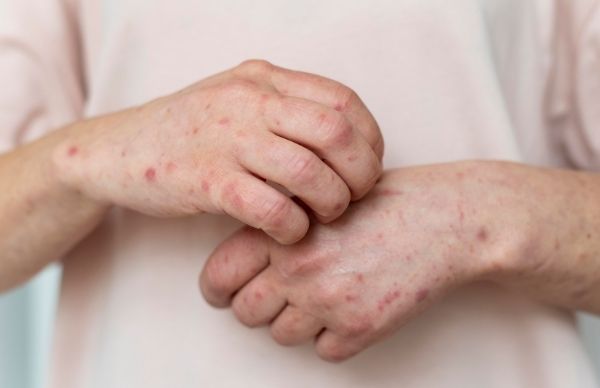Introduction
Red blisters, rashes, skin irritation and dehydration are some of the common symptoms of tomato flu. As the monkey flu panic is spreading in India after Corona, now a new flu is spreading targeting children called tomato flu.
Monkey flu
For the first time in India, 3 people have been diagnosed with symptoms of monkey measles in the state of Kerala, and 80 people have been confirmed to be infected with tomato fever. With this, the number of people affected by tomato fever in India has increased to 100. Here we have given a complete explanation of the cause, symptoms and prevention methods of this viral disease.
What is Tomato Fever?
Tomato fever, also known as hand, foot and mouth disease (HFMD), is a rare viral disease that can cause a rash and blisters all over the body. This fever is called tomato fever because all the blisters that appear on the body look like tomatoes in shape and color.
Experts have said that tomato flu can affect children under 5 years of age. Although the disease is not life-threatening, it is considered highly contagious.
Tomato Fever Symptoms
Red blisters, rashes, skin irritation and dehydration are some of the common symptoms of tomato fever. Apart from this, experts suggest that you may also experience high fever, body aches, joint swelling, fatigue, stomach cramps, diarrhea and vomiting, cough, and colds.
Like Corona or Monkey Measles?
Most of the victims of tomato fever are children. There is no word yet on whether the disease will be as widespread or dangerous as Covid-19 or monkey measles. Experts have warned to be extra cautious especially as this infection is more common among children.
No deaths from tomato fever have been reported so far. So till now, tomato flu is not considered life threatening. And most of its symptoms are mild and manageable and do not pose a threat to the public.
How does it affect children?
Tomato fever, similar to chikungunya, is said to cause red blisters and rashes on the skin of children. Parents are therefore advised to monitor children and keep them isolated as much as possible. Doctors warn against scratching or touching the blisters as this can make the skin problems worse. Parents are advised to ensure that the child is placed in a hygienic environment and to ensure that their surroundings and themselves are kept clean.
Is it treatable?
It is important for people suffering from tomato fever to maintain good hygiene. It is imperative to consult your doctor if any symptoms appear. Experts advise drinking plenty of water, resting and self-isolating until symptoms subside.
Preventive measures
The best way to avoid tomato fever is to avoid contact with someone infected with the virus. Do not touch objects that have touched the affected person and avoid using their clothes, utensils and other objects.






